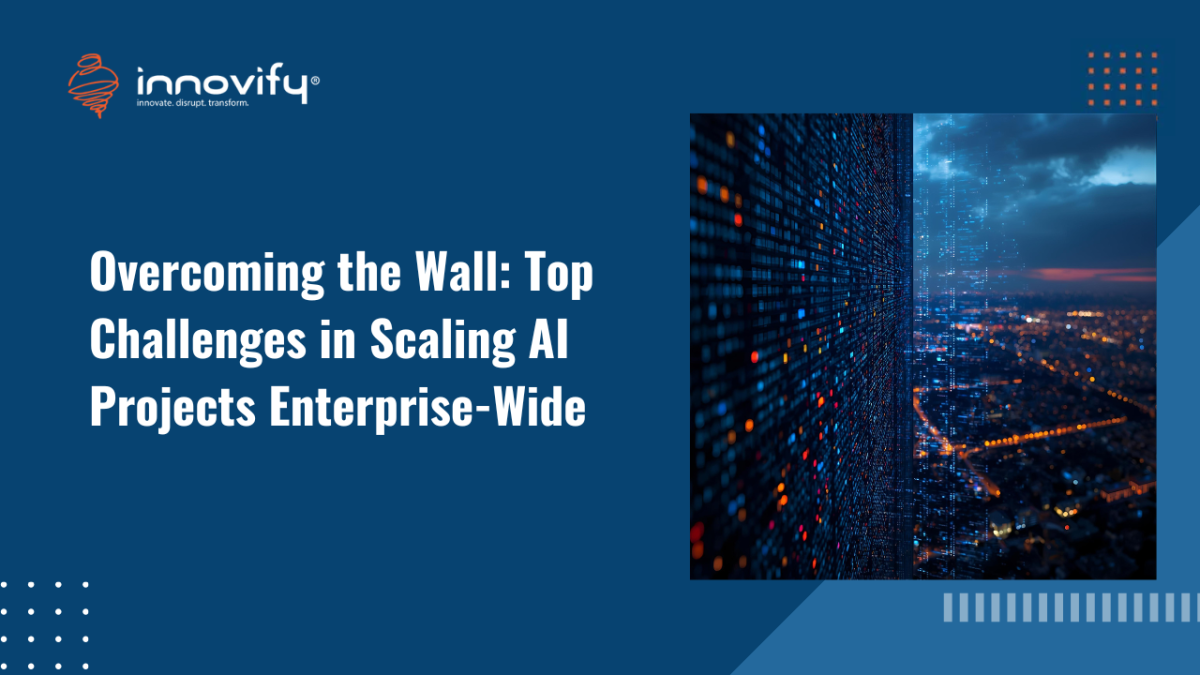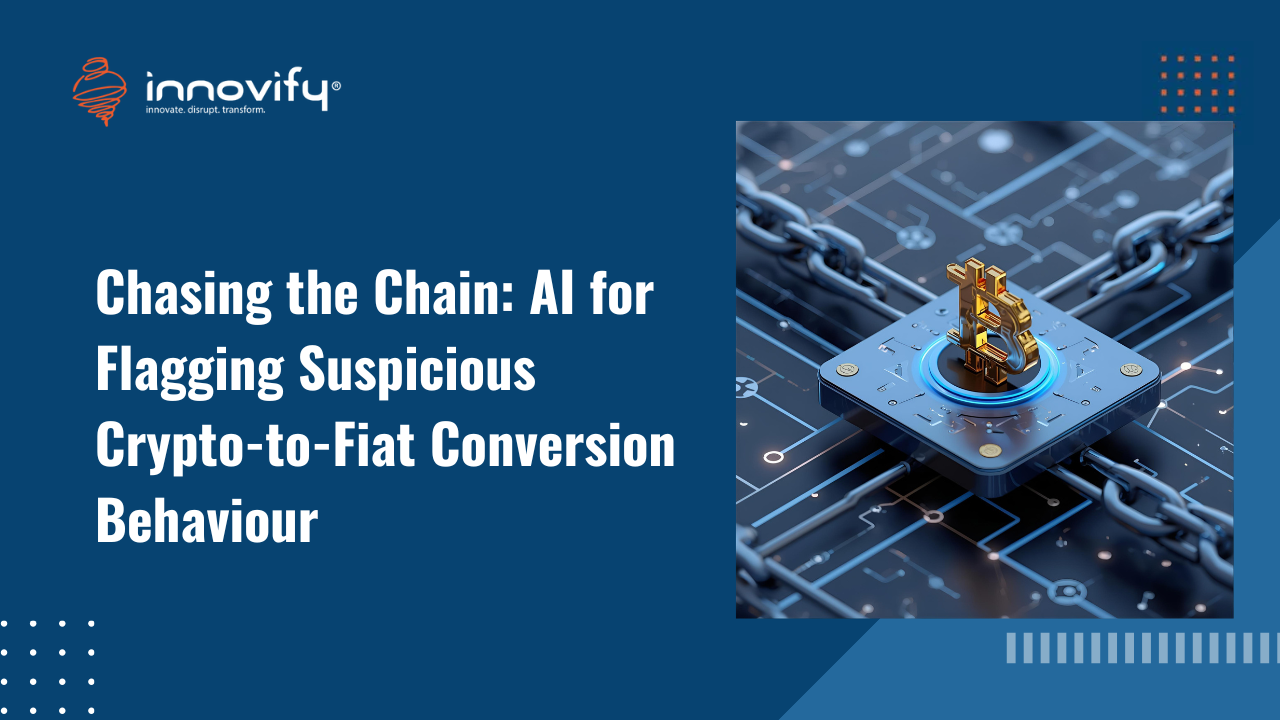AI/ML
Overcoming the Wall: Top Challenges in Scaling AI Projects Enterprise-Wide
Top challenges in scaling AI projects enterprise-wide
Many enterprises successfully pilot AI models, proving concept viability in a small, controlled environment. A Proof-of-Concept (PoC) might demonstrate a 90% accuracy in predicting customer churn or a 15% improvement in logistics efficiency. However, the true test of an AI initiative is the leap from this laboratory success to the full integration of hundreds of production-grade AI solutions across an entire global organization—a process known as scaling AI projects enterprise-wide. This transition is where over 80% of initiatives fail, according to industry reports. It involves surmounting technical, organizational, and cultural hurdles that can stall adoption, drain budgets, and lead to massive technical debt. To achieve the business transformation promised by Artificial Intelligence, enterprises must strategically and holistically address these top challenges in scaling AI projects.
The Fragmentation Problem: Technical and Data Debt
Scaling AI is fundamentally more complex than scaling traditional software applications. It is not just about deploying code; it’s about managing complex, dynamic, and interconnected systems of data, models, and specialized infrastructure. This complexity is often where “AI debt” begins to accumulate.
1. Data Silos, Quality, and Governance at Scale
The single biggest bottleneck to scaling AI is the messy reality of enterprise data.
- Data Fragmentation and Ingestion Challenges: Data required for training production-grade models rarely resides in a single, clean database. It is scattered across disparate systems: legacy mainframes, cloud data lakes, CRM platforms, and operational technology (OT) sensors. Extracting, cleaning, transforming, and unifying this data into a format usable by a training algorithm (Data Ingestion) becomes a massive, continuous engineering effort. The heterogeneity of data schemas, naming conventions, and access protocols slows down every project.
- The Data Quality Dilemma: As the number of models increases, so does the risk of inconsistency. A model built in the Finance department might use a different definition of “customer lifetime value” than one built in Marketing. Without centralized data governance – clear policies, standards, and oversight for data management – models built in one business unit may not be trustworthy or legally compliant in another. Scaling requires rigorous data quality checks on billions of records, including validation for completeness, accuracy, and timeliness.
- Feature Store Deficiency: A core component missing in the most unscalable AI stacks is the Feature Store. On a scale, dozens of teams inevitably rebuild the exact same features (e.g., “30-day average transaction count”). Without a centralized, versioned repository for standardized features, teams waste time, introduce calculation inconsistencies, and accumulate redundant infrastructure. A mature enterprise AI platform must treat features as a shared, managed resource.
2. Infrastructure Inflexibility and the MLOps Maturity Gap
AI models, particularly those based on Deep Learning and large language models (LLMs), demand specialized, high-performance computing (HPC) that often conflict with legacy IT architecture.
- Compute Constraints and Heterogeneous Hardware: Training state-of-the-art models requires massive, sustained utilization of specialized hardware like GPUs or TPUs. Deploying these models for real-time inference requires fast, low-latency CPU or optimized accelerators. Legacy IT infrastructure frequently lacks the flexibility or elasticity to provision these resources dynamically across different teams and use cases. The result is costly hardware sitting idle or teams fighting over limited computer clusters.
- Lack of MLOps Maturity: Scaling from one model to one hundred requires moving beyond manual scripts and Jupyter notebooks. It demands a robust, automated Machine Learning Operations (MLOps) pipeline. This pipeline must automate the entire model lifecycle: experiment tracking (logging every training run), model versioning (tracking every iteration of the model binary), continuous integration/continuous delivery (CI/CD) for models, and real-time production monitoring. Most organizations lack mature MLOps tooling, governance structures, and expertise to manage this pipeline consistently, leading to chaotic, non-reproducible deployments.
The Cultural and Organizational Hurdles
Even with perfect technology, scaling AI is often derailed by resistance to change, talent scarcity, and misaligned incentives.
3. The Talent Gap and Organizational Silos
- The Scarce Talent Problem: The demand for specialized roles – ML Engineers, MLOps specialists, and AI ethicists – far outstrips the global supply. Scaling AI means needing dozens of these experts, not just a handful. The solution often isn’t just external hiring, which is competitive and expensive, but a deliberate strategy to upskill existing talent – training Data Scientists in production engineering skills and training DevOps engineers in model deployment and monitoring.
- Siloed Responsibility: In many organizations, the Data Science team builds the model, the DevOps team deploys the code, and the Business team owns the data. This creates silos where no single team is responsible for the model’s performance, health, and value in production. Scaling demands a new, collaborative MLOps culture where cross-functional teams (Data Scientist, ML Engineer, Business Owner) share accountability for the entire model lifecycle.
4. Governance, Trust, and Proving ROI
Executive buy-in and end-user adoption are impossible without established trust and clear value.
- AI Governance and Risk Management: Deploying AI systems across the enterprise significantly amplifies regulatory, legal, and reputational risk. If a pricing model discriminates against or a credit model fails to explain a rejection, the company is exposed. Scaling requires a comprehensive AI Governance framework that defines policies for bias detection, model explainability (XAI), ethical use, and accountability. Without clear guardrails, business units will remain risk-averse, blocking adoption.
- The Leap from Technical Success to Business Value: A model’s 95% AUC (Area Under the Curve) score is a technical metric. Scaling requires consistently translating this into a quantifiable business metric, such as “$5 million saved in operating costs” or “3% increase in conversion rate.” When models are deployed poorly – e.g., they require users to learn a new, clunky interface – they realize business value drops significantly, despite the technical accuracy. Providing a consistent Return on Investment (ROI) for every scaled project is essential to secure continued investment.
By treating the scaling of AI as a strategic, cross-functional endeavor – addressing data governance, MLOps maturity, specialized infrastructure, and organizational change simultaneously – enterprises can successfully transition from isolated experiments to a truly AI-driven operation. The challenge is immense, but the competitive advantage for those who succeed is transformative.
Ready to move your AI pilots into production and build a scalable AI foundation? Book a call with Innovify today.




